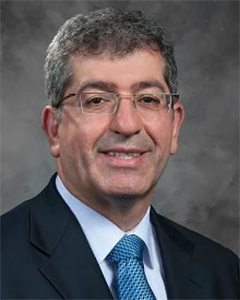Patient Story
Spinal Cord Tumor: Henry’s Story
It took more than 27 hours, three plane changes, six suitcases and navigating international health care systems for 7-year-old Henry and his family to travel from Australia to the United States last year. The surgery to remove a rare and complex spinal cord tumor, however, only took three hours and a four-day inpatient stay at Johns Hopkins All Children’s pediatric neurosurgery unit. For his family, it was no question whether to travel the 10,000 miles for the meticulous surgery that would improve Henry’s quality of life.
“When Henry was just a baby, we noticed he had a clenched fist and stiff shoulder on his left side,” says Natasha, Henry’s mother who also serves as Attorney-General for various ministries in Australia’s Northern territory, including as minister for health and minister for disabilities.
An MRI revealed a slow growing tumor, inside Henry’s spinal cord and embedded into the nerves. Doctors diagnosed him with a benign intramedullary spinal cord glioma, a case rarely seen in children that can cause muscle weakness and severe pain throughout life. Some cases can present as subtle pain that wakes a child at night or weakness in buttoning a shirt, or difficulty that causes tripping while walking.
“You want to find the best surgeon, so we did our research and found Dr. Jallo’s name,” says Natasha. “Most surgeons might see one of these in their lifetime, where Dr. Jallo was doing one a week.” The family found only a handful of experienced centers that did this particular surgery and decided to travel to meet George Jallo, M.D., in 2014, where he was a pediatric neurosurgeon at The Johns Hopkins Hospital in Baltimore.
“This was a grade II tumor that grew into the spinal cord tissue, which makes removal or a biopsy much more difficult,” Jallo says. “This tumor was benign but infiltrative, so we went straight to his first surgery to take out as much of the tumor as possible and try to preserve the normal part of the spinal cord without the tumor cells. This was followed up with chemotherapy in hopes of shrinking the tumor even more and physical therapy to work on his strength and balance.”
Henry was able to return to Australia for chemotherapy treatments, other therapy and even get back to enjoying the outdoors like a regular kid. Jallo stayed in touch with the family over the next several years while he took on a new role as medical director of the Johns Hopkins All Children's Institute for Brain Protection Sciences and vice dean and physician-in-chief at Johns Hopkins All Children's Hospital in St. Petersburg, Florida. As the family and Jallo continued to monitor the growth of the tumor, they decided in September 2019 it was time for another surgery, this time at the St. Petersburg campus. Jallo removed 80-90 percent of the tumor.
“Looking at Henry, you don’t realize he had a very complex spinal cord tumor, and it doesn’t slow him down of what he wants to do,” Jallo says. In fact, Henry was moving his left arm freely, up and walking just a few short days later, with a smile on his face, ready to take on the outdoors of the outback once again – the family says, in thanks to Jallo.
“We can’t speak enough about his bedside manner,” Natasha says. “He establishes a relationship with his patients, and made Henry feel comfortable.” The family members are such big fans they even asked Jallo at their last stateside appointment to sign a copy of Childhood Brain & Spinal Cord Tumors: A Guide for Families, Friends & Caregivers. The book that helped Henry’s family learn more about his condition and that Jallo helped develop content for with the authors.
Jallo’s work doesn’t stop here though. He’s off to another spinal cord tumor surgery later in the week and works toward researching these tumors in hopes of finding better, faster treatments. He’s collaborating with neurosurgeons, anesthesiologists, nurses and other clinical professionals on many of the cases coming through the Johns Hopkins Health System. The team is using the hospital’s biorepository to collect samples of spinal fluid and brain and spinal cord tumors to look for biomarkers to track these tumors to see if they are growing and studying why they form. The samples will be the largest pediatric repository of spinal cord tumors for doctors to research.
“Hopefully we can find an answer in our lifetime for these benign tumors, and definitely gain a better understanding to help families all over the world,” adds Jallo.





